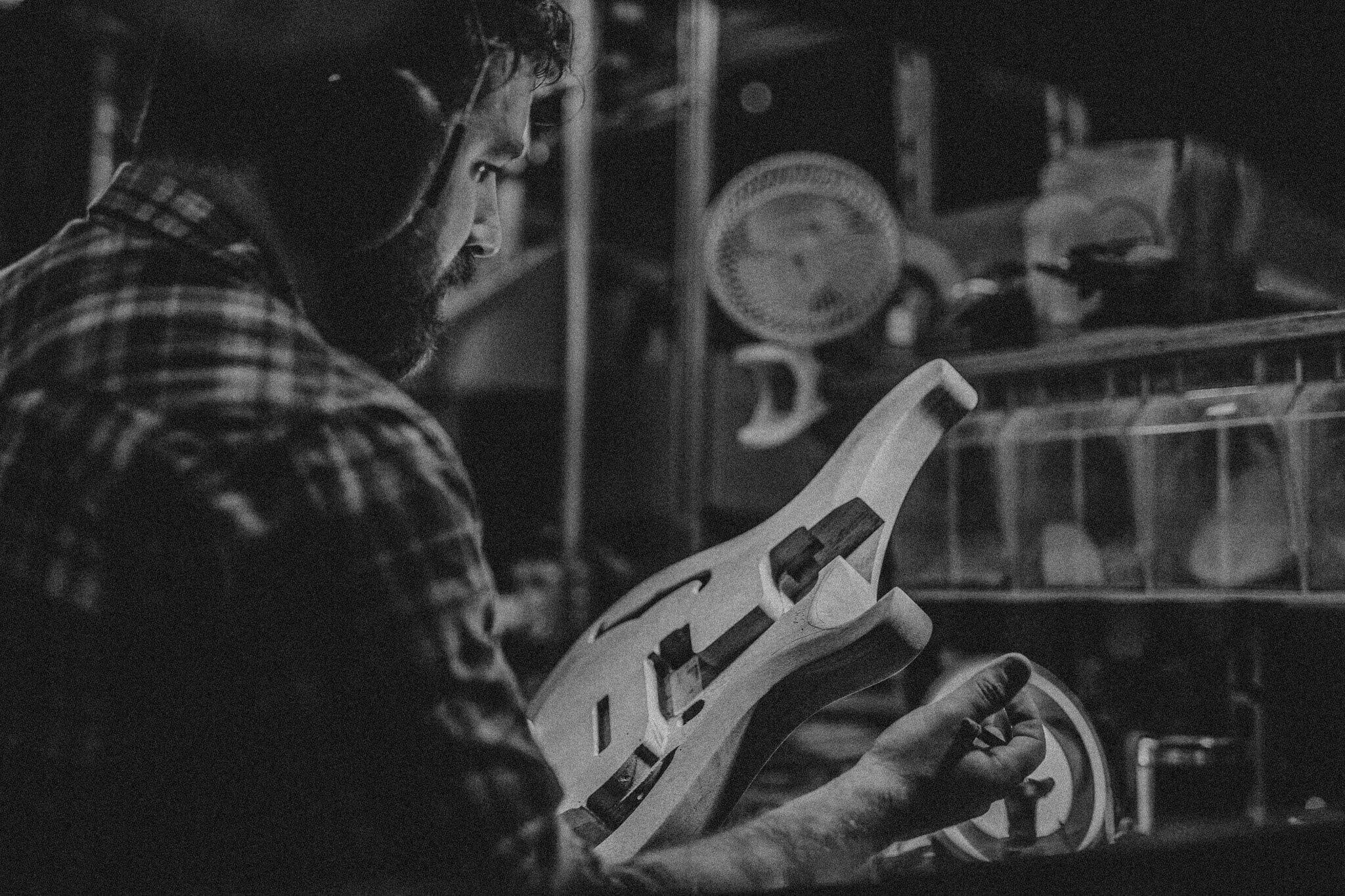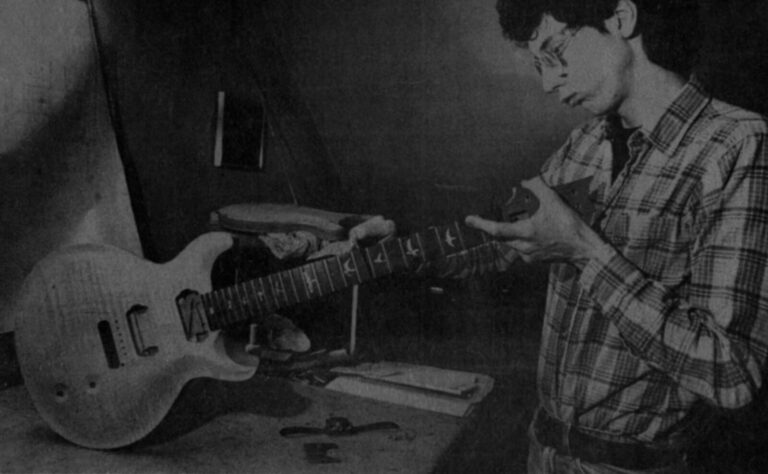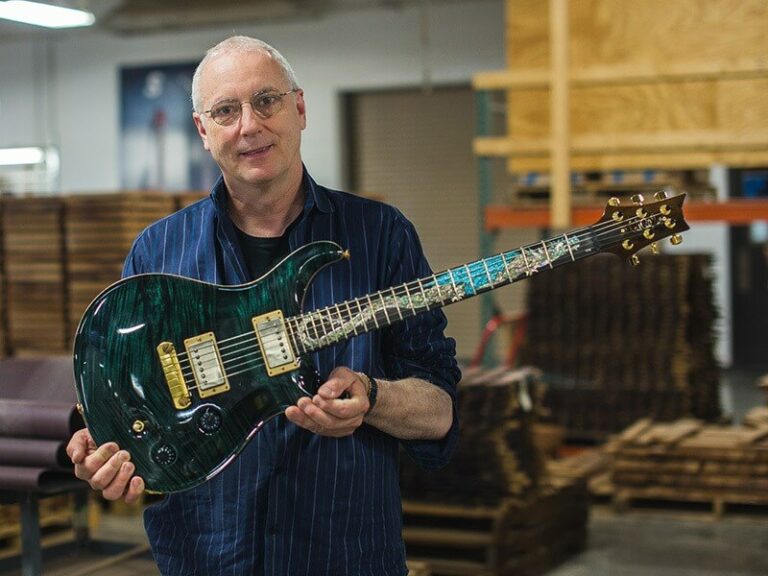A Dream Translated into Wood and Wire: The PRS Origin Story
In the mid-1970s, a young and ambitious Paul Reed Smith was studying liberal arts in Maryland when destiny came calling. Tasked with building a guitar for extra credit, Paul discovered a passion that changed his trajectory. He achieved a top grade and found his life’s purpose – to follow his dream of building exceptional guitars.
In an era dominated by corporate juggernauts Fender and Gibson, the likelihood of an independent luthier prospering seemed improbable. Undeterred, Paul set up a modest workshop and began honing his craft through trial and error. Early instruments were built from inexpensive kit guitars as canvases for Paul’s burgeoning design ideas.

Word slowly spread around the local music scene about this luthier building unique guitars by hand. Paul would frequent concerts to befriend roadies and get his guitars into the hands of famous players. Carlos Santana, Al Di Meola, and Jimmy Herring were early adopters, providing Paul the endorsements and initial revenue stream to formally launch PRS Guitars.
In January 1985, Paul exhibited his guitars for the first time at the winter NAMM show. The bold shapes, exotic woods, and intricate inlays attracted serious dealer interest. By year’s end, the original PRS factory opened in Annapolis, ready to deliver on those first orders. What began as a small team of 15 grew rapidly as demand escalated for Paul’s obsessively crafted guitars.
Passion for Innovation
More than simply an artisan, Paul harbored an inventor’s curiosity. The opportunity to refine and improve the instrument he loved was as alluring as building itself. Early on, Paul patented ingenious solutions to age-old guitar problems. His compensated nut improved intonation across the entire fretboard. The proprietary tremolo and switching aimed to eliminate tuning instability during aggressive playing.
As the company expanded, Paul remained dedicated to research and development. While respecting vintage designs, he understood the modern musician required improved reliability. Blending old-world craftsmanship with new-world technologies became the ethos of the PRS approach. Models were iterated and refined continuously to achieve ideal tone, playability and stability.


